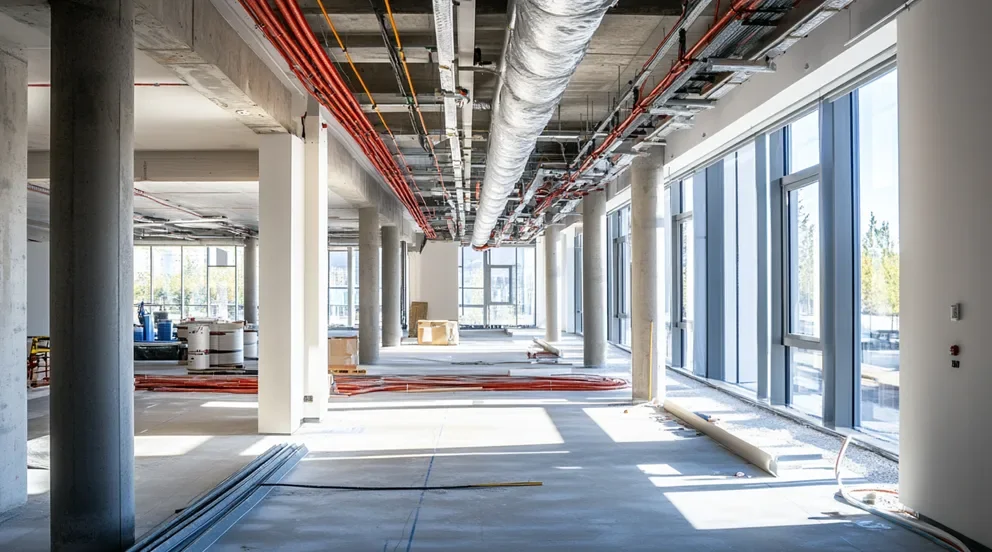A refrigerator air compressor is a device that compresses cooling gas to regulate the temperature inside a refrigerator. It works by using a motor to compress the gas and turn it into a high-pressure liquid. The liquid passes through a condenser, which cools the liquid back into a gas. The gas then flows through an evaporator, where it again absorbs heat from the air inside the refrigerator. Finally, the cooled gas flows back round to the compressor, where the cycle begins again.
The compressor draws in the hot gas from inside the refrigerator, cooled by an electric fan, and compresses it into a tightly sealed vessel, increasing the pressure. This increases the temperature of the gas, which then flows through a condenser coil to cool it down. The cooled gas passes through the evaporator, picking up the heat from inside the refrigerator and carrying it outside to release as air. To finish the cycle, the cooled gas passes back through the compressor, ready to cool the refrigerator again.
The compressor is the refrigerator’s most important component, and a malfunctioning compressor can lead to problems with cooling. Regular maintenance is therefore essential to keep a refrigerator running efficiently for years to come.
Anatomy of a Refrigerator Air Compressor: Components Involved to Make It Work
A refrigerator air compressor is an essential device that helps regulate the temperature inside a fridge. It consists of several components that work together to compress cooling gas and maintain a desired temperature.
The compressor is the first component and is powered by a motor. It draws in hot gas from inside the refrigerator and compresses it into a sealed vessel increasing its pressure. This, in turn, heats the gas up before it passes to the condenser coil.
The condenser coil is the next component, where the heated gas is cooled down. This cooled gas then travels to the evaporator, where it absorbs the heat from within the refrigerator and takes it outside to be released as air.
Finally, the cooled gas is sent back to the compressor where it is compressed again and the cycle continues. This is how the refrigerator air compressor maintains a desired temperature.
Regular maintenance of the compressor is essential to the overall efficiency of the refrigerator and should always be taken into account when using one. With proper care, a refrigerator can last for many years.
The Science Behind Refrigerator Air Compressors: How Each Component Fits Together
Refrigerator air compressors compress cooling gas to regulate the temperature of the interior of the fridge. This cycle is made possible with four components working together: the compressor, condenser coil, evaporator, and fan. The compressor takes hot gas from inside the refrigerator, compresses it into a sealed vessel, and increases its pressure. This heated gas is cooled down by the condenser coil. The cooled gas is then sent to the evaporator, which absorbs the heat from the fridge and releases it outside as air. The cooled gas then returns to the compressor to start the cycle over again. Regular maintenance is key for the compressor to maintain efficiency over a long period of time.
Types of Refrigerator Air Compressors and How They Differ from One Another
There are a variety of refrigerator air compressor types, each with its own unique advantages and features. There are positive displacement and dynamic compressors. Positive displacement compressors have an enclosed chamber and use a piston to compress the gas while dynamic compressors use a rotating element. The other type is the scroll compressor, which uses an orbiting scroll to compress gas. All three types are typically oil-cooled to increase efficiency and longevity.
Other types of refrigerant air compressors include single-stage, two-stage, and multi-stage compressors. Single-stage compressors are best for smaller cooling loads while two-stage and multi-stage compressors are more suitable for heavier loads.
The type of compressor used for a refrigerator will depend heavily on the amount of cooling capacity needed. Choosing the wrong type of compressor can cause problems with cooling, reduce the efficiency of the appliance, and even lead to compressor failure. It is therefore important to select the right type of compressor for a refrigerator.
Tips for Choosing the Right Refrigerator Air Compressor for Your Needs
When choosing the right refrigerator air compressor for your needs, there are several factors to consider. First, identify the cooling capacity you need. Different types of compressors are better suited for different types and amounts of cooling. Positive displacement and dynamic compressors are good for smaller loads while scroll and two-stage or multi-stage compressors are better for bigger loads.
Another factor is the compressor’s efficiency. Most models are oil-cooled, and this helps increase the compressor’s efficiency. Additionally, check to ensure the compressor is compatible with your refrigerator and offers long term reliability. Consider if it has a warranty and whether or not the manufacturer provides support.
Finally, factor in the cost to be sure you’re getting the most bang for your buck. Compare prices of the different models and brands available and check customer feedback before making your purchase to ensure you choose the best refrigerator air compressor for your needs.
Understanding Maintenance and Troubleshooting of Refrigerator Air Compressors
Regular maintenance and effective troubleshooting of refrigerator air compressors is essential for creating an efficient cooling system. Maintenance includes checking the power system, pressure gauge and safety release valve. The pressure gauge is important to ensure the pressure does not exceed the limit, while the safety release valve is essential to avoid breakdowns.
In addition, always ensure that the compressor and other parts of the refrigerator are clean, clear of dust, and properly lubricated. It is also important to run a filter and change the oil regularly as recommended by the manufacturer.
If your refrigerator isn’t cooling, a quick troubleshooting of the compressor will help identify any problems. Check for power supply, blockages, and unusual noise coming from the compressor. Unplug and re-plug the refrigerator, and shut it off and on from the wall switch. Inspect the condenser, evaporator, and compressor for problems. Finally, if the problem persists, contact a service technician for assistance.
How Refrigerator Air Compressors Help Increase the Efficiency of a Refrigerator
Refrigerator air compressors help increase the efficiency of a refrigerator by compressing cooling gas to adjust its temperature. The system consists of several components that work together to create a cooling cycle. A compressor draws in hot gas from the refrigerator, compresses it into a sealed vessel, and increases its pressure, heating the gas up. It then passes through a condenser coil, cooling it down, and then to the evaporator, where heat is absorbed from the air inside the refrigerator and released outdoors. Finally, the cooled gas returns to the compressor, ready to begin the cycle again. With proper maintenance, a refrigerator’s efficiency can be increased and it can continue to work properly for years.
What You Need to Know Before Installing a Refrigerator Air Compressor
Before installing a refrigerator air compressor, there are important considerations to take into account. First, determine the cooling capacity needed for the refrigerator, as different types of compressors are better suited for different loads. Also consider the compressor’s efficiency, compatibility with the refrigerator, long-term reliability, and cost. Additionally, make sure the power system, pressure gauge and safety release valve are all in working order, and that the compressor and other parts of the refrigerator are regularly cleaned and lubricated. These steps will ensure a successful installation and a long period of efficient cooling.
Benefits of Refrigerator Air Compressors: How They Benefit the Environment
Refrigerator air compressors play an important role in maintaining optimal temperatures inside fridges, as well as providing environmental benefits. By compressing cooling gas to regulate temperatures, compressors work to reduce energy consumption as well as utility costs. As a result, less energy is wasted and saved for other uses.
Compressors also help reduce the amount of noise produced from the refrigerator, making it more pleasant to be around. Additionally, they prevent the release of any harmful gases, such as ozone-depleting Freon, into the atmosphere, helping to protect the environment.
Overall, refrigerator air compressors benefit both the user and the environment. By using energy more efficiently and emitting fewer pollutants, they are essential for creating a greener world.
Key Takeaways
A refrigerator air compressor is a device that compresses cooling gas to regulate the temperature inside a refrigerator and is composed of several components. These include the compressor, condenser, evaporator, and fan. Three types of refrigerant air compressors are available – positive displacement, dynamic, and scroll – while single-stage, two-stage, and multi-stage compressors allow for heavy loads. Regular maintenance and proper selection of the compressor will help ensure efficient cooling. Additionally, compressor installation requires that you choose the right type for your refrigerator and check the power system, pressure gauge, and safety relief valve. Finally, refrigerator air compressors provide environmental benefits such as reduced energy consumption and pollution.



